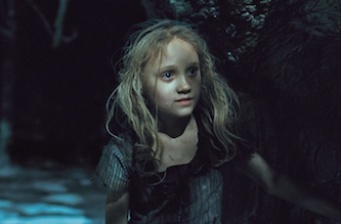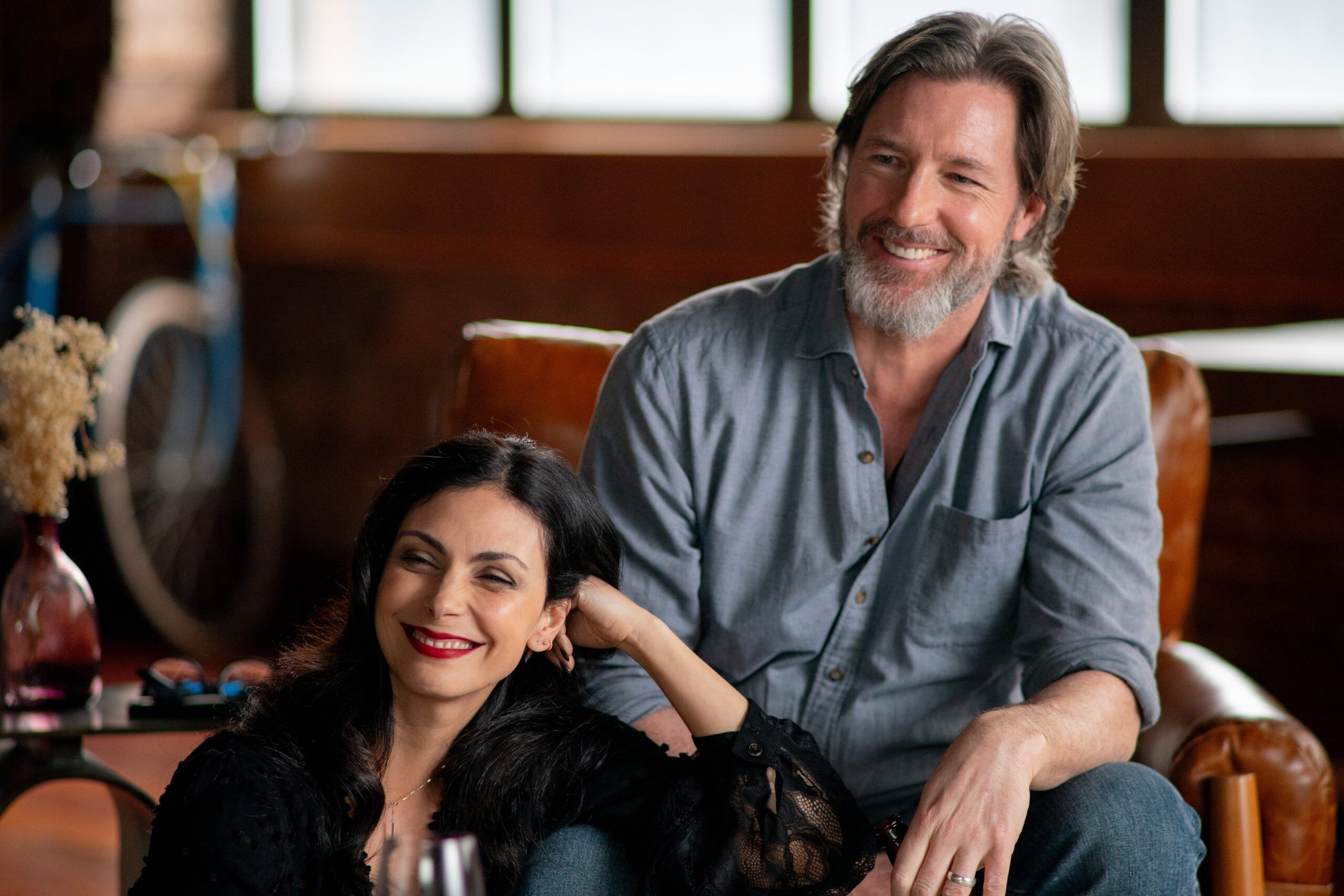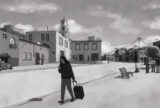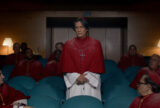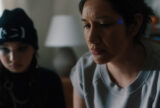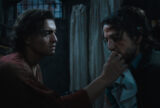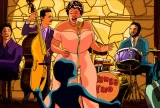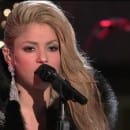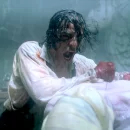01.14.2013 | By Karen Posada |

With Ben Affleck’s “Argo” winning big at the 2013 Golden Globes last night, there was another film that also set the stage for an auspicious Oscar night on February 24th – Universal Pictures’ “Les Misérables”. It won Best Picture and Best Actor in the Musical/Comedy category, and Best Supporting Actress for Anne Hathaway. Those were some major categories, especially knowing that Harvey Weinstein was letting loose the PR dogs in full force on the HFPA for “Silver Linings Playbook”.
Based on what is widely considered to be one of the greatest novels of the nineteenth century, and the world’s longest-running theatrical musical, Victor Hugo’s French book ‘Les Misérables,’ first published in 1862, is set against the backdrop of 19th-century France. It’s the enthralling story of broken dreams and unrequited love, passion, sacrifice and redemption – a timeless testament to the survival of the human spirit. Hugh Jackman plays ex-prisoner Jean Valjean, hunted for decades by the ruthless policeman Javert (Russell Crowe) after he breaks parole. When Valjean agrees to care for factory worker Fantine’s (Anne Hathaway) young daughter, Cosette (Amanda Seyfried), their lives change forever.
There are many things to consider when contemplating to see Tom Hooper’s ‘Les Misérables’: it is nearly three hours long and the words are sung for the entirety of the movie (there is no dialogue at all). That’s something many people are not used to and it can be polarizing at first. But in our professional opinion, this is a cinematic masterpiece drenched in powerful performances; both acting and singing, with stunning cinematography, memorable camerawork and a haunting score sure to provoke tears of joy and sadness. You must also remember that Tom Hooper was the director of ‘The King’s Speech’ which won the Oscar for Best Picture, Best Director, Best Actor and Best Original Screenplay in 2011. He now has the pedigree to deliver gold.

Without further adieu, here are our 4 reasons why you should go see… no, NEED to see this masterpiece musical.
1. The story is universal
We see how much suffering Hugh Jackman’s character goes through. He thinks what Victor Hugo wanted was to remind people to love, something he believes is relevant and needed in the Middle East. That love and self-realization come from being present, “know what you stand for in life and face what is in front of you. The humanity of just seeing what
Anne Hathaway who plays a woman that has to find the means to send her daughter money for medicine as she’s very sick, came to realization that her character is not a woman from 19th century France, but it’s someone who is living right now and could be just a block away. She goes on to say “This injustice exists in our world, so everyday I thought “this isn’t an invention, this isn’t me acting, this is me honoring the Fantine that lives in this world, in all of our lifetimes.” The actress prepared for her part by watching YouTube clips and reading articles about women who either go into prostitution voluntarily out of need or are sex slaves. To her it was an inspiration to give a voice to these women. A powerful outlook with a visceral sense of contemporary social awareness.
Her character isn’t the only one showing how timeless this story is, Eddie Redmayne plays the part of one of the students hungry for revolution as a way of changing the putrid society they live in, which shows contemporary relevance. He says, “all you had to do was open a contemporary newspaper to see equivalence happening whether it was protests in NY or in the Middle East. This idea of young people lighting a flame to try to expose truth or pursue their own passions for a greater good…there was relevance across the board to tap into.”
Which works into what the Hooper himself was thinking when he was pondering on whether this was the right time to bring this story to the big screen. Here’s where he exposed what Les Misérables is all about: “there’s so many people hurting around the world because of social economic inequality, inequity, there’s such anger against the system whether it’d be the protests in Wall Street or in London,

2. Some serious acting and preparation went into the film
Hugh Jackman is Jean Valjean, prisoner 24601, who has been used for slave labor for 19 years. We meet him just as he’s being released. Jackman is unrecognizable physically and he mentioned the director wanted to show time and that if people who knew him didn’t start asking if he was sick, then he was not doing it right. “I did loose a lot of weight and then had the joy of putting weight on which was a 30lbs journey from the beginning,” says Jackman.
He thinks this is nothing compared to what Anne Hathaway did, which was loose about 25lbs. in 2 weeks. Jackman told us about how far Hathaway was willing to go to be truthful to her character. Not only did she loose so much weight at such a fast pace, but also she had a professional hairstylist cut her beautiful long hair on camera. Jackman told us to look for man hands in a dress in that scene. He jokes about overhearing Hathaway’s haircutting consultation with Hooper, “I remember Annie saying ‘by the way if you end up cutting my scalp and there’s blood, fantastic, let’s go for it’ and Tom was standing behind and I put up my hand and I said “for the record, I would like make-up, fake scars please”. In regards to the haircutting, Hathaway says she doesn’t regret it and offered cutting her own hair, because she knew the effect it would have on the audience and would hopefully communicate her suffering authentically. “It was always something I knew in the back of my mind I’d be willing to do for a character, if there was ever the thing to do…when I got cast and I read the script and I knew they were keeping the haircutting in… I thought doing it for real might raise the stakes for the character.”
Sweetly Hathaway concluded with: “I don’t want you to walk out of here charmed by Hugh Jackman because we all know that he’s a miracle and that he can be totally friendly and sometimes I think that keeps people from seeing his genius as an actor… what he does in this film is inspiring and I just don’t want this nice guy thing to distract you from the fact that he’s a deep serious and profoundly gifted actor.”

3. The singing was done live
Director Tom Hooper speaks of Hathaway saying her singing is “absolutely fantastic, she has this utter feeling of naturalness about her which puts you at ease.” For the film the main goal was to find actors who were comfortable communicating through song, so much so that the audience doesn’t feel a need for dialogue. Every single actor in this film had to audition, no matter his or her Hollywood statuses. Each went through a rigorous three hour audition process, this was for them to prove they could sing live and that they could communicate through song instinctively; it was also for the actors themselves to know what they were getting into. Hathaway who is a soprano and belonged to a chorus in high school which performed at Carnegie Hall, trained with Joan Lader her voice teacher for six months before the film to learn to sing the way she does in the film while keeping her face firm. Hooper informed us that she practiced crying and singing, so that she would be ready to do it live on camera, she wanted to be prepared.
Hugh Jackman isn’t unfamiliar with musicals and told Hooper he did his one man show to prepare for Les Misérables; whether that’s true or not Hooper couldn’t be more thrilled to have him on and says his ease and charisma are not an easy thing to have. The most historic thing was the song created for the film exclusively, not originally in the musical called “Suddenly” which is when Valjean meets Cosette. Jackman reminds us that this song propels the second half of the movie. This is “one of the most incredibly dramatic moments ever written about” but had no song. It was genius for the director to bring the original team from the musical: Claude-Michel Schonberg, Alain Boublil, Herbert Kretzmer and Cameron Mackintosh; not only to help him during the entire film, but also with this number.
Amanda Seyfried had voice lessons as a teen, studied opera and trained with a Broadway coach and her impeccable voice shows all of that. She’s so comfortable singing that she admits she forgot she was singing on set about her emotions, feelings and thoughts, as opposed to something you usually speak. Her character, Cosette, when she’s a grown up is very sheltered and Seyfried laughs saying all she did was stand and sit. Fortunately Hathaway blows away her modesty informing us Seyfried hit a high C, something very few can do.
Samantha Barks is a professional singer and actress, which was put in the spotlight after coming third in an English talent show called “I’d Do Anything” in 2008. She’s had plenty of success after that and played her role of Éponine on the Queen’s Theater from June 2010 to June 2011, so taking the role over for the film was an honor for her. She’s used to crying in the rain on stage, so on the set, “that kind of realism in your voice kind of adds to the emotion of that live singing. Specially moments like “A little fall of rain” with me and Eddie, it allows you to be intimate, and we are crying, but kind of trying to add that to your voice. When you’re speaking and crying you can hear that in someone’s voice…to be able to hear that when somebody is singing adds to the emotion a bit,” says Barks. Her voice truly soars, especially when singing “On My Own”.
For Tom Hooper these actor’s preparation, their hard work, gave them the freedom to just act, they “were free to disappear into the characters and not have to worry about technique.”

4. An Oscar winning director directed Les Misérables
Hooper knows the huge responsibility he had on his hands since this is a musical that has been beloved for over 26 years and has been translated into various languages, it truly has taken over the world. He understands that the central part is being able to experience strong emotions and he wanted to re-create this experience more intensely. To do this Hooper knew using close-ups was the way to go, getting uncomfortably close to the actors’ faces when they are singing to have a “more visceral connection”. Bringing together the original team who created the musical helped the film to stay close to the source material. They also helped to recreate conditions from the musical and teach Hooper what it’s like to do a musical. There are parts he included from Victor Hugo’s book such as the opening; adding the twist of using a damaged warship as a metaphor to represent the vulnerability of state power and how easily it can be “destroyed and harmed, you see the power and fragility of the system in that image”.
The barricade battle in the book is intimate which moved Hooper. He found showing those details on film would be exciting.
The cast themselves became really close, so much so that they would hang out after rehearsals and shoots and would still communicate by singing. Hathaway confirmed the whole cast is “massive Les Mis geeks”, being fans of the story they understood what was entrusted to them. Their passion for music linked them together, so much so that Hathaway and Barks sang a duet from ‘Rent’ on their free time, where Barks was Maureen and Hathaway Joanne. They also sang Adele’s latest album.
Redmayne says they supported each other and would ask each other for advice; stating “the mixture of the theater world and film world felt unique and original to all of us….
Jackman closes off by sharing one last sentiment “it had the feeling of the closest stage show I’ve never been involved in, but it was a film, which is unusual and we’ll all be bonded for life.”
If you haven’t seen “Les Misérables” yet or are on the fence about seeing it, know that Hollywood musicals aren’t made anymore, and that if made, they are not made with this caliber of quality of production or acting. You are in for a cinematic experience for the ages and it deserves to win Best Picture at the 2013 Oscars hands down.


